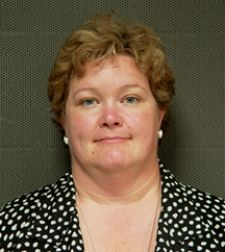
Frequently, the difference between a patient’s health and safety and the harm and pain he or she may experience resides in a technology-packed box at the patient’s bedside or next to the surgical table in the operating room that effectively monitors physiological vital signs.
What these vital signs monitors lack in footprint and size they more than gain in capabilities and stature. They can be configured to measure a variety of parameters, including ECG, respiratory rate, invasive and noninvasive blood pressure, body temperature, arterial hemoglobin oxygen saturation, mixed venous oxygenation, cardiac output, end-tidal carbon dioxide, intracranial pressure and airway gas concentrations during the administration of anesthesia, for example.
When something inside a patient’s body malfunctions, these monitors automatically and quickly alert nurses and physicians that they’re needed right away. In short, these extremely useful tools accomplish a lot for clinicians and their patients.
The array of physiological measurements that today’s vital signs monitoring equipment is capable of sensing and recording certainly is impressive. Just imagine where patient care would be without access to these tools, such as a century ago when this electronic monitoring equipment didn’t exist. But fast forward your thinking 100 years and reflect on how future caregivers will remember these devices today?
With all the capabilities that vital signs monitors have incorporated over the years to advance the effectiveness and efficiency of high-quality patient care how might these tools be improved further? What are the additional signs that might be incorporated as the physical footprint and size of the devices shrink over time? Pain, based on neurological stimulation? Urinary incontinence? Emotional distress? Glucose? Spirometry?
Outpatient Care Technology Editor Rick Dana Barlow posed a series of questions to key executives of the leading vital signs monitoring technology manufacturers to uncover clues to how the next generation of products will function and where product development trends are heading.
Because the use of vital signs monitors is so pervasively ingrained in healthcare delivery it’s easy to take the technology for granted. So what do you foresee as the next big development in vital signs monitoring applications to expand functionality or improve performance? Why? How do you envision the next-generation vital signs monitors functioning? What additional capabilities and features will be available to enhance patient care, particularly in the outpatient setting? If you could design and program the most futuristic vital signs monitor known to man, what useful features would it include?
Andrew Kersey, COO, CAS Medical Systems Inc., Branford, CT
Without doubt the next technological improvements to patient vital signs monitors will involve preventive medicine to predict critical events before they occur, by utilizing new parameters and electronic medical records.
Vital signs monitors directly tied into patient medical records will allow information to be reliably captured at home, the doctor’s office, clinic or hospital, even from a moving ambulance. Clinicians will be able to immediately review a patient’s history electronically wherever they are.
The following new noninvasive parameters would allow greater insight into a patient’s health no matter what their condition may be: cardiac output, cerebral oxygen saturation and glucose monitoring.
Cardiac output has long been an incredibly useful parameter exclusively for the OR, but the inherent risks have often outweighed the benefits. Cardiac output is now an increasingly reliable noninvasive diagnostic tool which when used with noninvasive blood pressure can give the clinician insight into the patient’s cardiovascular performance.
CASMED has developed a new parameter that combines cerebral protection with noninvasive monitoring, allowing clinicians to continuously measure absolute cerebral tissue oxygen saturation (SctO2) even in non-pulsatile conditions. Monitoring this parameter in real time allows clinicians to observe potentially serious cerebral desaturation events as they occur, providing the opportunity to make timely critical interventions, thus improving clinical outcomes.
In the future, noninvasive monitoring of glucose will also be a valuable adjunct to vital signs. The ability to rapidly and painlessly detect adequate blood glucose levels will go a long way to understanding a patients needs well before they become critical.
Armed with the next-generation vital signs monitors, clinicians will not only be able to detect the basic ABCs – airway, breathing and circulation with end-tidal CO2 monitoring and pulse oximetry, but also the workload from the heart (cardiac output and NIBP), their blood glucose level and the jewel in the crown – whether they are providing enough oxygen to keep the patients brain alive.
Utilizing EMR systems during routine exams, monitoring records and trending for these vital parameters will detect subtle changes way before a disease may have otherwise presented itself. Vital signs monitoring will remain vital for many years to come.
Because the use of vital signs monitors is so pervasively ingrained in healthcare delivery it’s easy to take the technology for granted. So what do you foresee as the next big development in vital signs monitoring applications to expand functionality or improve performance? Why? How do you envision the next-generation vital signs monitors functioning? What additional capabilities and features will be available to enhance patient care, particularly in the outpatient setting? If you could design and program the most futuristic vital signs monitor known to man, what useful features would it include?
Gary Bucciarelli, senior vice president, Magnetic Resonance, MEDRAD Inc., Indianola, PA
Vital signs monitors are integral in healthcare delivery and continued development of technology and performance is necessary to keep pace with healthcare practice in the future. The magnetic resonance (MR) vital signs monitor is no different. MEDRAD is one of the few companies developing vital signs monitors for the challenging MR environment. Medical professionals are demanding features and functionality in MR vital signs monitors that match those found in monitors in other environments, and MEDRAD is focused on meeting these needs by bringing cutting-edge technology to the MR imaging suite.
The key driver for future vital signs monitors is patient care. In MR, targeted advancement areas are clinical outcomes, patient safety and information management. The MR vital signs monitors of the future will deliver solutions for these needs.
Because of the constant presence of a strong magnetic field, the MR environment is a unique challenge. Technology solutions in MR vital signs monitors, like MEDRAD’s Veris MR Monitor, continue to improve clinical outcomes by maintaining the standard of care set in non-MR environments. For example, MEDRAD is the leader in using fiber optic technology to remove the dangers of wires in MR while maintaining the same level of performance in wired technology outside of MR. Fiber optic technology applications include pulse oximetry and electrocardiogram. MEDRAD will continue to advance fiber optic solutions and leverage other technologies, including wireless technologies, to deliver a high standard of care in the MR environment.
For patient safety, vital signs monitor technology will evolve along with scanner technology. Independent of magnet field strength or magnet design, vital signs monitors will ensure seamless, interference-free compatibility. Success will be determined by the ability of monitor manufacturers, like MEDRAD, to work collaboratively with magnet manufacturers.
Vital signs monitors are one of the primary sources of information about the patient condition. MR vital signs monitors provide diagnostic information prior to, during and after a procedure. This information is used both to determine the course of action for care and, in concert with the image, to make a diagnosis. The opportunity to leverage this information is currently constrained by the limited ability to transport it into a complete patient record. Future developments will allow the MR vital signs monitor diagnostic information to be seamlessly shared by multiple applications and equipment. Clinicians will use the information to review images and it will be integrated into the patient’s complete electronic medical record.
The complex MR environment requires solutions to address many challenges that medical professionals in hospitals and imaging centers face daily. MEDRAD will be at the forefront of these innovations while maintaining the rigorous standards for reliability and safety that have been part of MEDRAD since our founding in 1964. Our reliable solutions in MR monitoring will continue to deliver positive patient outcomes now and in the future.
Debbie Carr, R.N., director of integriti Systems, Stinger Medical, Murfreesboro, TN
A need exists to streamline clinical workflow at the bedside. Technology’s goal should be to automate data acquisition to eliminate transcription errors and increase communication speed between caregivers. Point-of-care vital signs collection is repetitive and time-consuming making it an ideal choice for automation. Sending data directly into the patient EMR from a bedside computer or PDA allows the clinician more time with the patient. Data would then be available quickly enterprise-wide, improving communication between healthcare providers, decreasing transcription errors, and increasing patient safety overall. Much of this technology is actually available today.
Ideally, the next generation of vital signs monitors will increase available functionality, not only automating data collection, but also incorporating wireless sensors and probes. The monitor hardware and screen would be conveniently located for the clinician on a wall mount, mobile workstation or desk. The current cables and sensor wires connecting the patient to the monitor would be removed and replaced with wireless technology. For example, an SpO2 probe would transmit its readings to the vitals device without the long cord that currently gets tangled in the bed.
The lack of connection wires and cables (to the hardware) would make the patient experience much more pleasant during monitoring. Imagine a patient actually being able to turn over while sleeping without becoming tangled in cords!
Additional data could be collected at the point of care such as glucose and other portable laboratory devices. Information collected would be sent to the clinician’s mobile workstation computer, tablet PC or PDA. All current patient data and alarms could be viewed from multiple locations: clinician PDAs, clinician tablets, mobile workstations, central monitoring stations.
The most futuristic vital signs device imaginable would be light, portable and wireless. The device would be a computer “imaged” with all hospital applications and software, able to receive assigned patient vitals information as well as handheld lab data from devices such as glucometers. A clinician would be able to view a current summary of vital signs information on all of their patients on multiple computer platforms. These innovations would allow clinicians to economize their movements, streamline workflow, decrease documentation time and increase time spent caring for patients.
Bill Putnam, general manager, low acuity monitoring, Patient Monitoring, Philips Medical Systems, Andover, MA
In my role managing Philips global low acuity monitoring business I’m often asked, ‘What’s next?’ Looking into the future, I see opportunities to significantly change the care delivery model for vital signs monitoring. Some of these changes will occur several years in the future. Others are already happening today.
First, vital signs monitoring can be made more convenient for clinicians and more comfortable for patients. One of the biggest complaints from nurses is that it’s difficult to manage monitor cables. A sea change in the low acuity care market would be the development of cableless vital signs monitors. The biggest complaint from patients is discomfort when taking blood pressures. Ongoing advances in noninvasive blood pressure algorithms can improve patient comfort and improve the speed and accuracy of readings. These new devices, as they are further developed, have the potential to significantly increase patient comfort.
Another recent development that may improve the patient experience is arm-worn multiparameter vital signs monitors, combining a cuff, ECG, and SpO2. In the future, we are also likely to see clothing incorporating multiparameter sensors for ambulatory patients.
Out of the hospital, in the long-term care setting, companies are developing bed sensors to monitor temperature, bed-wetting and patient movement. Falling is a major concern in the long-term care setting, so analyzing patient movement and agitation may indicate when patients are likely to leave the bed and risk a fall. With early warning, nurses could intervene before an accident happens.
More than ever before, we are being asked to deliver wireless technologies. A major development that’s here today and will become increasingly important in the future is communication from vital signs monitors to the electronic medical record. Ideally, this communication would be wireless. The goal, of course, is to save time for nurses and improve accuracy of recording measured data. Philips develops industry-leading wireless patient monitors and technologies across a wide spectrum of care. We can apply this knowledge to bring similar wireless and remote access solutions to outpatient settings as well as other non-acute care settings.
Some day, as organizations put the necessary infrastructure in place, I think we will see smart card technology — common in other industries and in other countries — used to manage patient health. Carrying a record of a baseline ECG, allergies, prescriptions and other relevant healthcare data, and sharing that information with physicians via wireless card readers — perhaps even downloading it to vital signs monitors combined with clinical decision support technology — would be a significant advancement.
Remote monitoring, whether from a patient’s home or a secondary care facility, is another trend that’s well suited for wireless technology. For example, patients with diabetes could track their glucose, pulse oximetry and blood pressure and send the information to a central data repository that could flag abnormal readings and contact patients as well as their physicians. Remote healthcare and high-quality, multiparameter devices can give patients more control over their own care.
At Philips Medical Systems, we are committed to improving patients’ lives. I feel very fortunate to be working in an industry where I have the opportunity to influence how we deliver medical care and manage wellness. After all, as a baby boomer myself, with parents in their 80s and grandparents who lived into their 90s, I intend to live a long and active life. I’m optimistic the future will bring an array of new products that will help me receive better medical care and take an active role in managing my health.
Editor’s Note: This article explores products that may not currently have Food and Drug Administration clearance for sale in the U.S. It also provides conceptual ideas for products and processes that could be developed in the future to improve outpatient care technology and delivery practices.




